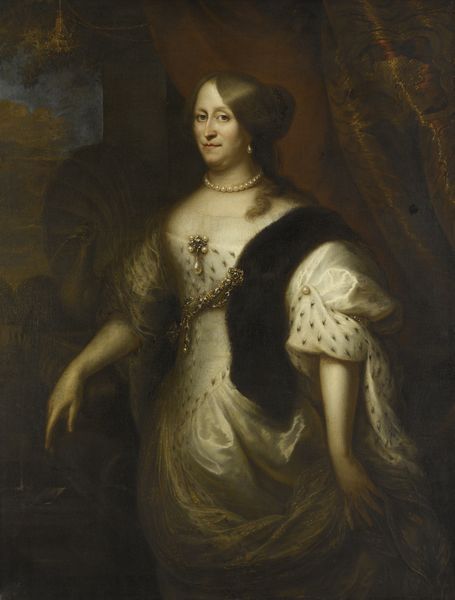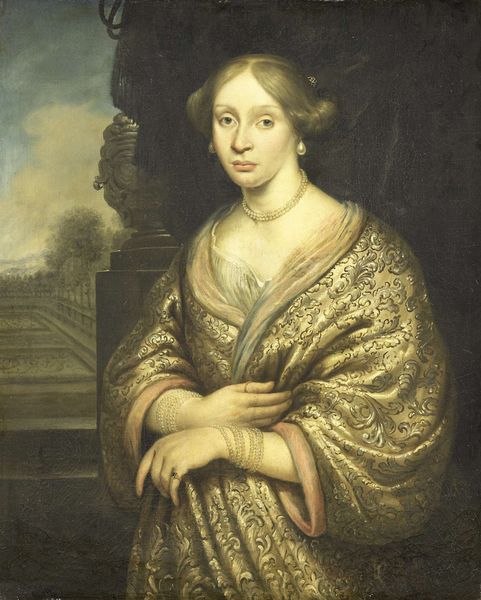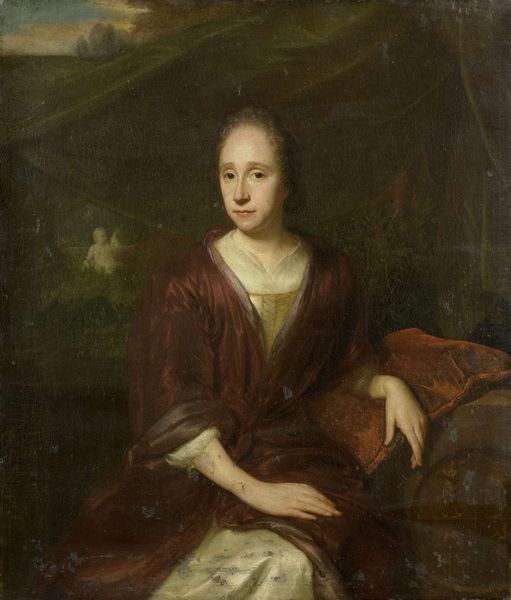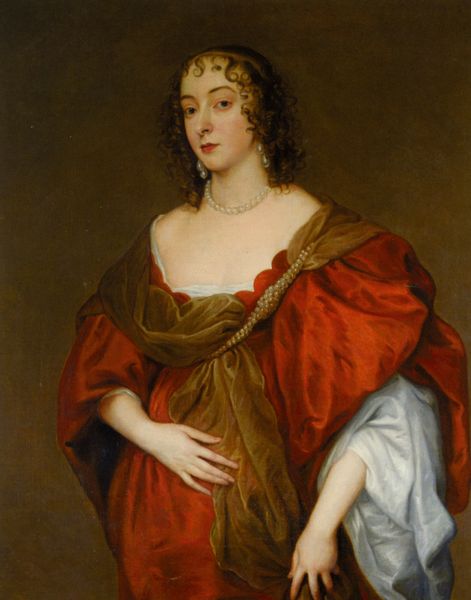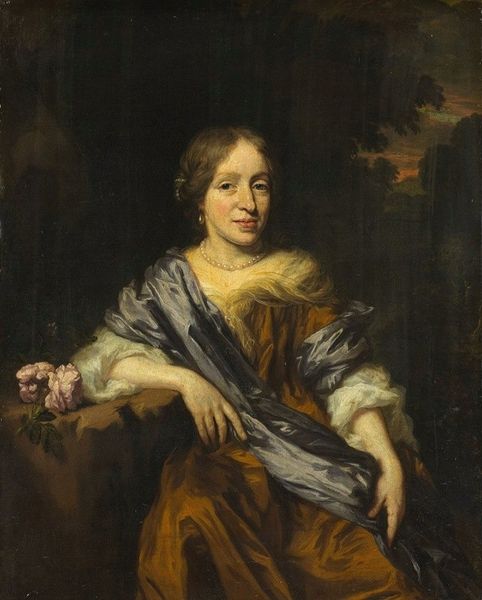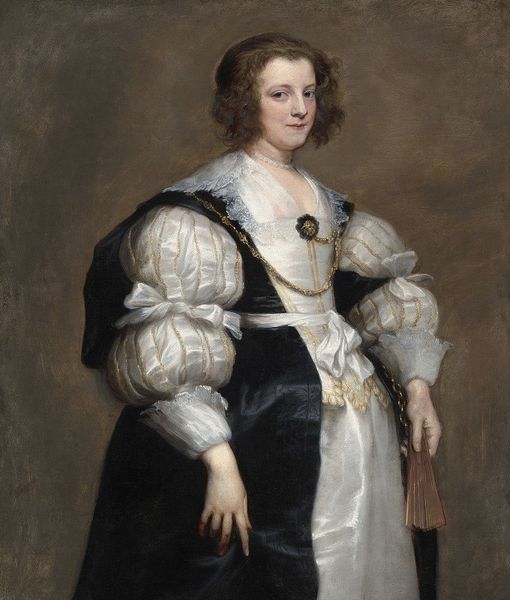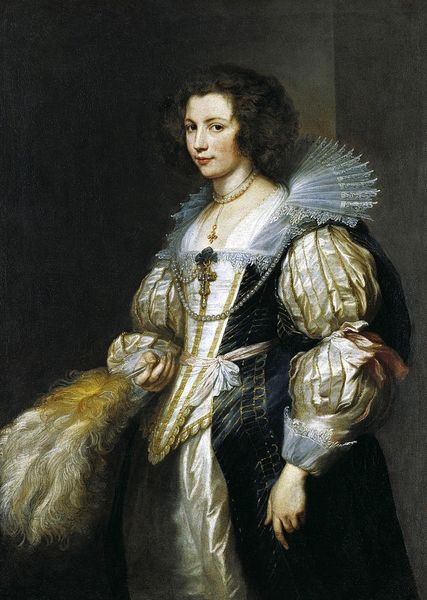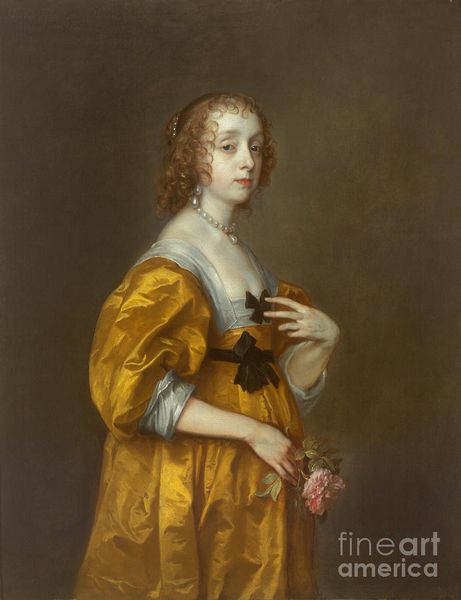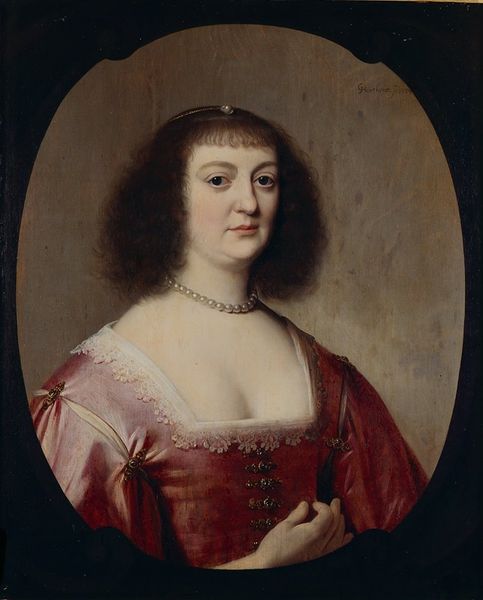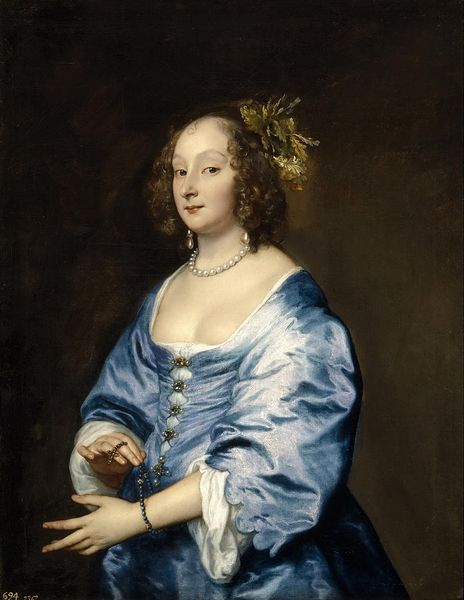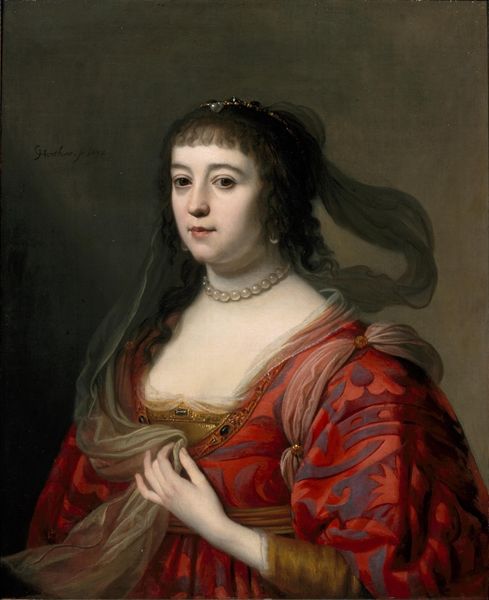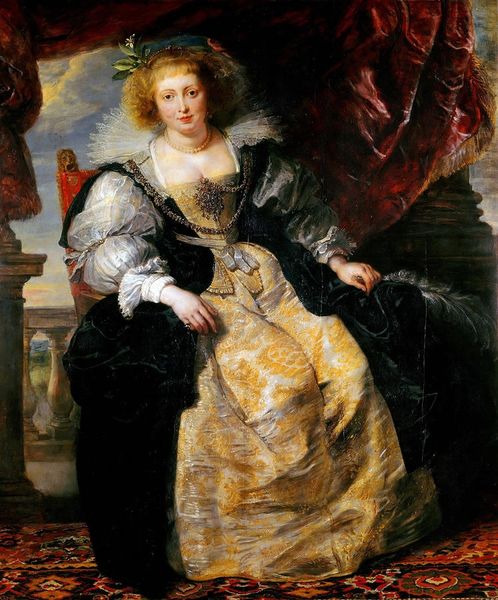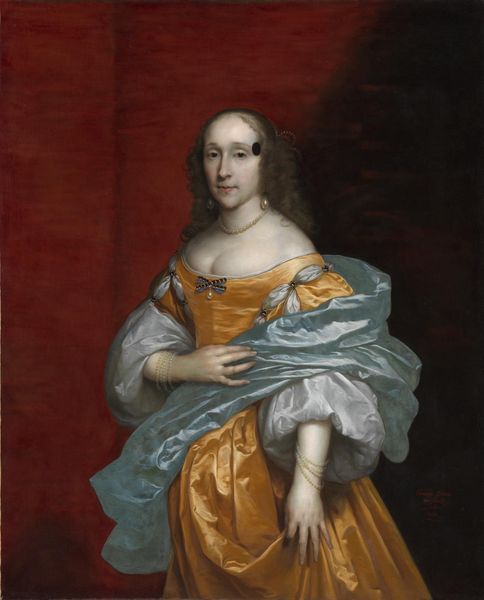
oil-paint
#
portrait
#
baroque
#
dutch-golden-age
#
oil-paint
#
figuration
#
oil painting
#
portrait head and shoulder
#
history-painting
Dimensions: 102 x 126.5 cm
Copyright: Public domain
Curator: Ferdinand Bol painted this portrait of Queen Ludwika Maria Gonzaga de Nevers around 1645, rendered in oil paint during the Dutch Golden Age. It's quite regal, don't you think? Editor: It’s immediately striking – the opulent fabrics, the subdued background…almost theatrical. But also a bit melancholy? The colors are rich but muted. Curator: The Baroque period certainly loved its drama! I'm interested in how her depiction, as a Queen, navigates societal power structures of the time. A female monarch, especially then, carried significant weight. I wonder how that influenced Bol's choices? Editor: Look at the inclusion of the sword, juxtaposed with the globe. It seems a clear attempt to convey both earthly power, through military might represented by the sword, and dominion, through scientific or worldly influence – a classic iconographic pairing. It seems like Bol is strategically choosing imagery for their meaning and import. Curator: Precisely! This wasn't just a pretty picture. Royal portraits functioned as political statements, reinforcing the sitter's authority. Who was she portraying herself to be through symbolic details and adornment? And how might she, as a woman, have had to consciously participate in that construct? Editor: There’s a visual tension between the softness of her face and the sharpness of that sword – maybe highlighting a paradox about the queen. Strength conveyed with elegance, power presented alongside knowledge of the world. Do you see other contrasting elements, considering gender roles of the era? Curator: Absolutely, this gets us into interesting dialogues on female representation! Does her pose, gaze, or costume choices reinforce or subvert accepted stereotypes? How do these readings inform contemporary discussions of gender and power? Editor: I agree. Focusing in on the symbols creates a compelling visual language—inviting layered meanings for modern interpretations. Her story lives on through visual echoes of her power, if you will. Curator: Exactly! Viewing portraits of historical figures—particularly of women—can offer profound perspectives. Editor: It adds an important layer, offering up multiple readings through an interplay of her personality and symbolic messaging.
Comments
No comments
Be the first to comment and join the conversation on the ultimate creative platform.
